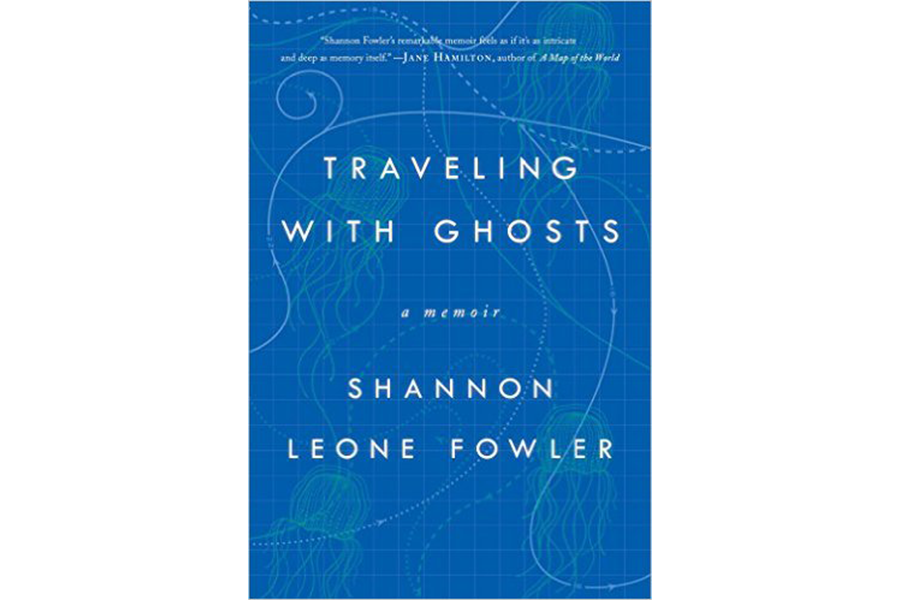'Traveling with Ghosts' tells a true story of great tragedy, remarkable kindness
Loading...
It’s become something of a cliche to describe a memoir as “brave.” But the word attaches itself easily to Shannon Leone Fowler, a California native whose doctoral fieldwork in marine biology took her to Australia and whose passion for travel took her just about everywhere else. In 1999, while backpacking through Europe, she fell in love with an Australian named Sean; three years later, days after getting engaged, they were vacationing on a beach in Thailand when Sean, standing in placid knee-deep water holding Fowler in his arms, was stung by a box jellyfish. Just 25 years old, he died within minutes.
In her deft and lovely debut, the memoir Traveling with Ghosts, Fowler tells this wrenching story with grace and fortitude. She also tells of her unusual response: unable to return to studying the ocean she feels has betrayed her, yet reluctant to stay at home in California with her worried family and with friends discomfited by her grief, she plans a solitary, months-long winter sojourn through eastern Europe that may strike readers as the opposite of a salve. She decides to backpack through Poland, Bosnia and Herzegovina, Romania, and Bulgaria because they are cheap, cold countries where she can avoid the ocean and encounter few English-speaking tourists. Only later does she realize she’s been drawn to “cultures that [understand] loss.”
The book’s brief chapters present sketches not just from Fowler’s trip following Sean’s death but from childhood summers spent with her oceanographer grandfather; her adventures throughout Europe, Australia, Morocco, and China with Sean; and her surreal week after his death, stuck on Ko Pha Ngan in Thailand battling a hostile bureaucracy until she’s cleared to bring his body home to his parents in Melbourne. As the book moves backward and forward in time, she creates a warm and vivid portrait of Sean, a generous, spirited, and easygoing young man with whom she is “nauseatingly in love.” She writes of her guilt – that she didn’t realize he’d been mortally wounded, that he died alone while she was running for help – and her despair when his devastated family eventually stops returning her e-mails and phone calls.
Given that this is partly a travel memoir, Fowler also delivers keen insights on the countries she visits. Exploring Sarajevo as it was still recovering from the brutal siege of the 1990s, she encounters “wounded people and buildings on every corner.” At a market that had been the site of two gruesome massacres, “the produce on offer seemed exhausted, the winter harvest heaped into small piles of shrunken apples, wrinkled potatoes, and weary cucumbers,” she writes. But the vendors were smiling and the streets were crowded and buzzing. Sarajevo “was one of the most alive places I’d ever visited,” she marvels, “like a city waking up after a long nightmare.”
In the middle of her journey, Fowler takes a side trip to Israel to visit two women who, in addition to her and Sean, emerge as the book’s major characters. Anat and Talia are Israelis in their early 20s who were also vacationing on Ko Pha Ngan when Sean died. When locals put Sean in the back of a pickup truck and drive to a clinic whose doctor tries unsuccessfully to revive him, the two women follow on foot. They then accompany Fowler to a temple, where together they wait through the night for someone to locate the key to a box that will remain cool enough to store Sean’s body.
The next day, the women – at this point Fowler, still in shock, hasn’t even asked their names – spend long hours with her at the police station, successfully standing up to an officer who wants to list Sean’s cause of death as drunk drowning. It finally occurs to Fowler to ask them why they were at the clinic to begin with. “We followed you,” one answers.
“From the beach?” Fowler asks. “To see if Sean was okay?”
“No,” comes the reply. “To see if you were.”
Fowler doesn’t learn until much later that these two strangers changed their plane tickets, determined to remain on the Thai island with Fowler until she was allowed to leave, offering company, solace, and assistance with the numbing administrative tasks necessitated by death. They’re the ones who break the news to her that another young tourist has died from a jellyfish sting in the days after Sean’s death. ("Traveling with Ghosts" has an element of advocacy, as the Thai government and tourist industry have downplayed the risks of venomous jellyfish.)
Just as Fowler’s difficult path after Sean’s death yields lessons about survival and resilience, her friendship with Anat and Talia, which continues to this day, yields its own lessons, of a kindness so extraordinary that it’s nearly as affecting as the tragedy at the book’s center.







